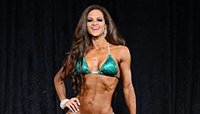You put 100 percent into your training and diet regimen before stepping onstage. You've spent countless hours at the gym, measured out your meals, and rigidly stuck to your game plan, all for this one moment. Your physique is at its best, and you know you deserve first place. But is a V-taper, back separation, and killer quad sweep enough to take home the coveted first-place spot?
When scrutinizing a lineup of near-perfect bodies—so well-conditioned and bronzed they'd make the Greek gods jealous—judges often have to rely on the small details to make that final decision. While these individual pieces might seem miniscule, they add up and influence the total package you present.
Judges often eliminate competitors solely based on what stands out—in a bad way. It's worth putting in the effort to perfect seemingly minor details. Here are a few pointers to help you avoid the common pitfalls other competitors face before you even set foot on the stage.
Practice Your Posing
I've said it before and I'll say it again: Nothing is more important than nailing your posing routine. Your posing is how you present yourself to the judges, so minor changes in angles and whether you contract or relax a muscle can dramatically change the appearance of the lines in your body.
Learning how to pose for your body—which poses maximize and minimize your strengths and weaknesses—is the most important element of your presentation.
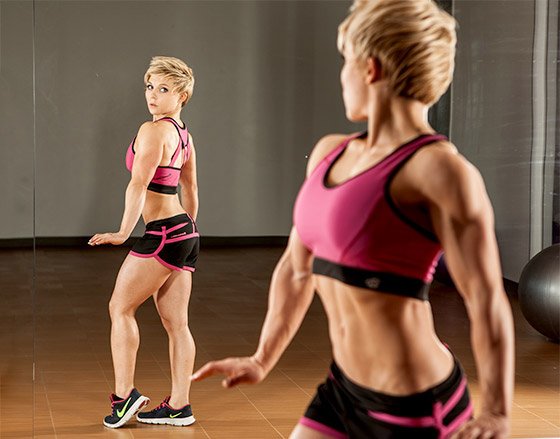
Common Error: back separation
Nonsymmetrical contraction of the latissimus dorsi in a lat spread results in one protruding scapula. It's not a pretty pose, and it's one that can quickly cost you a top call-out.
Common Error: Wide waist
A wide waist presented in a classic front pose can also cost points. Instead, a woman with a wide waist should twist her upper body to present a more flattering angle.
TIP Meet with a posing coach, preferably someone with judging experience who can help you learn how to pose correctly for your body type. Not sure where to start?
Contact your show promoter and ask if they're aware of any judges who offer posing clinics. Casting your line into social media networks can also be a way to uncover great resources.
Find A Suit That Flatters You
There's no doubt that bodybuilding competition suits can be expensive, but this is one place where you should not cut corners. Look for a reputable maker who specializes in competition suits and is familiar with the lines and cuts that accentuate your physique.
Most female competitors need to pay particular attention to the bottom—specifically bikini competitors who need the perfect-fitting bottom to accentuate the fullness and roundness of their glutes.
Men don't have it any easier. Male physique athletes need to pay attention to the way their shorts fit around their waist. They also need to keep length in mind. Ill-fitting shorts can make a competitor appear messy and unbalanced.
Months of hard work can be ruined by wearing the wrong suit.
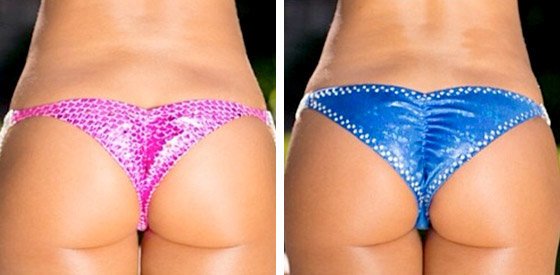
Common Errors: Buying a cheap suit
Shelling out half the cost for a cheaper bikini can cost you in the long run. A bottom that is too large, a cheap bottom without the necessary curvature, or a suit cut the wrong way can make your glutes appear small and flat.
Among male physique competitors, shorts that are too big or too long are a common mistake. Shorts that fall lower on the leg can cause the competitor to appear shorter, which throws off a competitor's balance.
TIP If you want to present your physique in the best way possible, get the best suit possible. CJ Elite suits are known in the bodybuilding competition world as being one of the most well-made suits.
They're worth the money and have been worn by everyone ranging from amateur bodybuilders to top professional bikini competitors. CJ and her knowledgeable staff can help you get the right cut, color, and connectors for your suit to fit your body.
Tell her Dr. Brandy sent you!
Choose The Right Suit Color
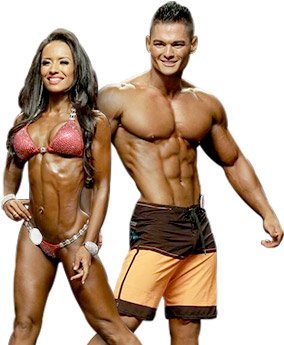
Yes, suit color matters! Your suit color selection should complement your overall look, specifically your skin tone and hair color.
When it comes to choosing the "right" color, there are a few generalizations that can be made, but the final selection should always be individualized.
In general: dark and solid colors look better on stage; blondes should not wear yellow; dark green looks great on olive skin tones; and black hair goes well with red or light blue suits.
For the male competitors, board shorts are a great way to show off your style. However, avoid loud colors and patterns. You want to stand out for the right reasons, not for how off-the-wall your shorts are.
Common Error: Not choosing a flattering suit
Pay attention to what looks best on you. If a blonde competitor wears a yellow suit, it clashes with her hair color. If a male physique competitor wears a multi-colored board short, it looks reminiscent of a clown costume. Believe me, I've seen it. Don't be that guy.
TIP Go online, look at recent bodybuilding competition pictures, and see what the top amateurs and pros are wearing. It's that simple. Also, don't be afraid to ask your suit maker for recommendations based on your features. Remember, a knowledgeable suit maker is a valuable resource.
Lock Down Your Hairstyle
We've all seen those infomercials where a woman changes her hair from long and straight to short and curly, or pulls a "color 180" and goes from platinum blonde to brunette. It's all about presentation and finding what works best for you. The same is true for hair when you're hitting the stage.
Although longer hair typically presents better, your facial structure may look better with a shorter length. The color and the condition of your hair can also make a huge difference, and it's not something judges will miss.
Men usually have a little more wiggle room; I've seen guys with mohawks and spiked hair place well However, if I was a judge looking at two competitors with similar physiques, I'd choose the guy with a healthy head of groomed, styled hair over the one with a mohawk. Consider it food for thought.
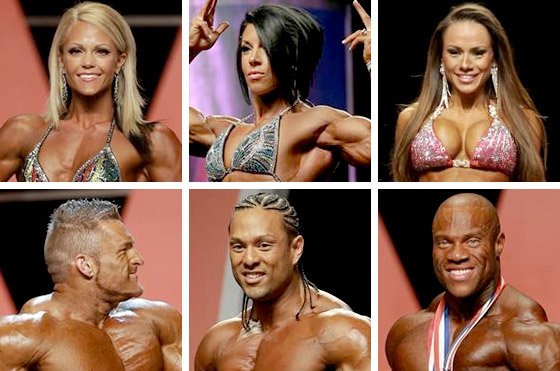
Common Error: Not prepping hair for the on-stage experience
Stage lighting can alter the appearance of more than just your physique—it can change your hair color as well. Blond can change in shade, and a competitor with too much "warmth" in her hair color can end up with a radioactive-looking glow that washes out her complexion. A personal lesson I learned is that frizzy hair seems to be magnified by stage lights. Not a good look!
TIP Try out multiple hairstyles ahead of time, and take pictures. You'll be surprised how extensions or soft, sexy curls can change your overall look. If you have dry, frizzy, or curly hair, consider a Brazilian blowout in the days or weeks before your show to add smoothness and shine. My secret tip to super-shiny, healthy-looking hair is to apply a shine spray or smoothing gloss just before heading on stage.
Although showcasing your style can be rewarding offstage, always remember that judges may be more conservative in their preferences. In the end, that subjectivity might creep into the results.
Make Sure Your Makeup Is Correct
Stage makeup is much different from the darker colors and cat eyes you might use for a girls' night out. Altering between colors and finishes—matte versus shimmer, for example—makes a big difference in how things look under stage lights.
Not sure where to start? Most shows will provide information about competition makeup artists available for that show.
Common Error: Skimping on costs
A competitor who applies their own makeup or hires an inexperienced makeup artist who uses the wrong products can encounter disaster. Shimmer makeup doesn't show well onstage, and most colors don't look the same under stage lights.
Also, if you apply your base makeup in a shade that's too light, your face will look pale compared to your darker body tan.
TIP At least once, hire a competition makeup artist who has great word-of-mouth reviews. Take notes about what makeup brands and colors they use. Take pictures and reference them when you or another artist try to recreate your winning look. If you're applying your own makeup, check out completion-stage makeup videos on YouTube.
Get A Tan Plan
A dark competition spray tan is applied to emphasize muscle definition when you're on stage under hot, reflective lights. But color isn't the only important aspect of your tan.
Different tanning companies use different formulas that can react differently with your body chemistry, causing them to alter the hue of the final color, the overall darkness, and the number of coats needed.
Choosing the formula that works best for you—and that's applied by an experienced technician—can be the difference between a great, even color and a blotchy, streaky mess.
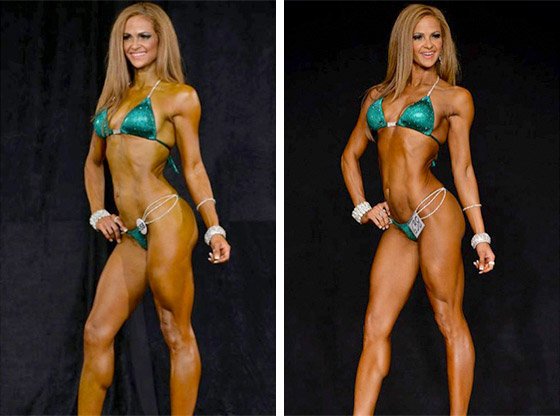
Common Error: Not testing tanners
Test tanners out before using them on the main stage. A competitor who chooses a tanner that does not react well with their body chemistry could start off a show looking green. Mistakes also occur if you hire an inexperienced technician who applies the tanner too heavily, causing streaks and blotchiness.
TIP I suggest testing out multiple tanning companies' products to see which formula gives you the best color. Judges take the quality of your tan and complexion into consideration. You don't want to be the competitor who stands out for all the wrong reasons.
Be Sure You Wear The Right Bling
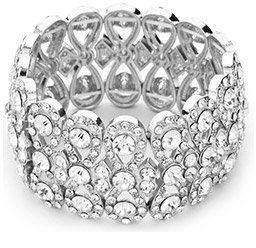
For female competitors, sometimes half the fun of competing can be the glitz and glamour of stage jewelry. Who doesn't want to display their hard work while dripping with Swarovski crystals?
Wearing rhinestone jewelry and rhinestone-studded shoes should be viewed as adding the final detailed touches to the complete package.
Common Error: Over-icing
The saying "less is more" definitely applies to stage jewelry. Stage jewelry should add to your overall look, but it should never be so ornate that it drowns out your physique.
As a judge, I'll never forget the competitor who walked out wearing too much of everything—too many bracelets, rings, and rhinestone hair clips. Her accessories looked like a sparkly mess and, unfortunately, distracted from the rest of her look.
TIP Luckily, Glam Competition Jewelry has taken the guesswork out the equation. They specialize in stage jewelry that's the correct size and length, with quality rhinestones appropriate for the amateur or pro stage.
They also carry stage heels with rhinestone details that offer the perfect amount of bling (my personal favorites). Glam Competition Jewelry is a one-stop shop for all of your competition needs and ensures that you achieve the right look the first time.
Recommended For You
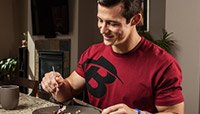
5 Ways Cheat Meals Can Improve Your Body!
Cheat meals don't have to spell diet disaster. In fact, a well-structured cheat meal can help you surmount weight-loss plateaus! Cheat smart with these must-read tips.
The 5 Secrets Of Successful Competing
Making the decision to turn fitness into a competitive sport isn't an easy one. Here's what you need to know before you sign up for a physique competition!